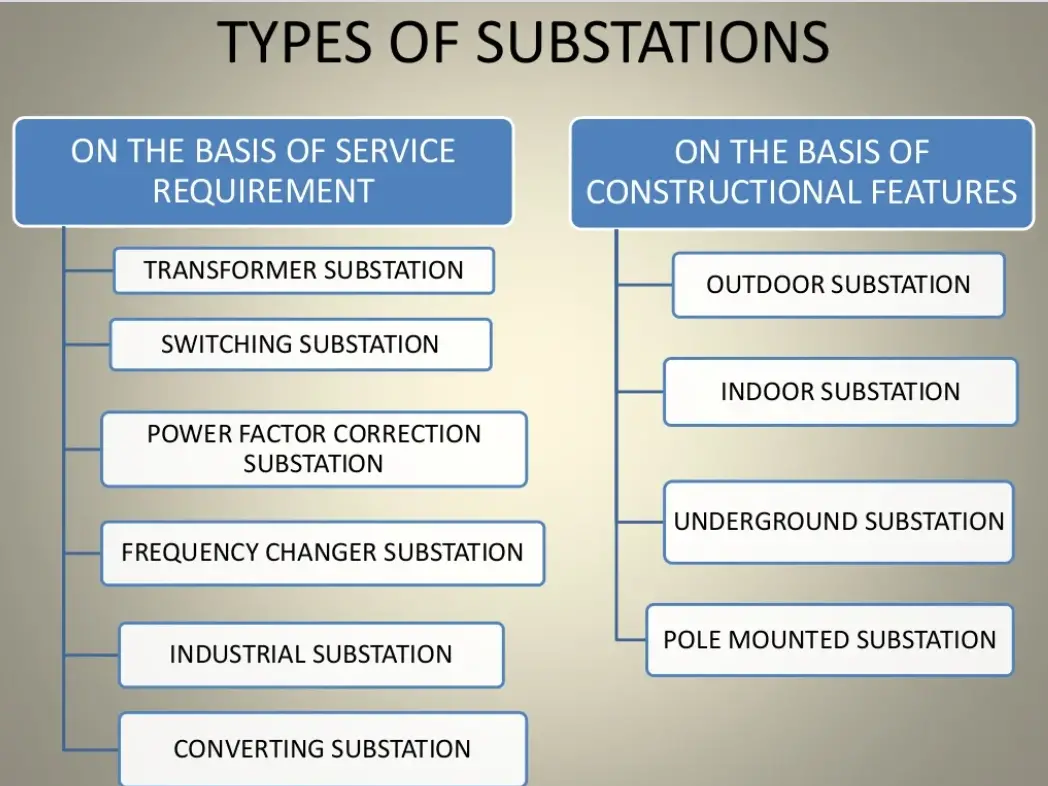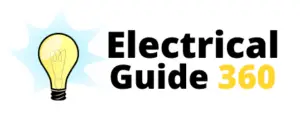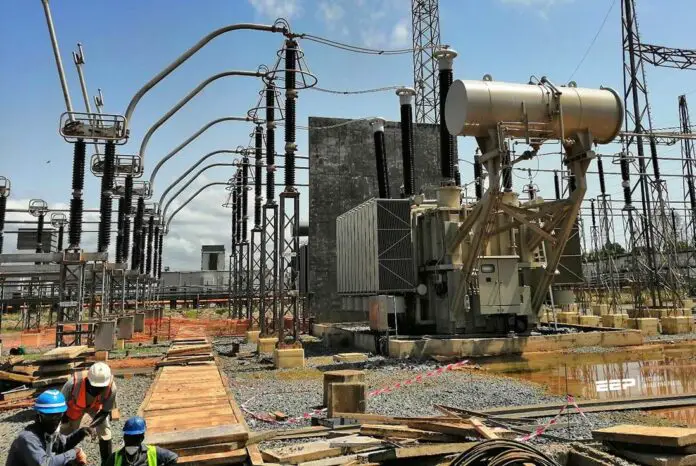Defination: The assembly of apparatus used to change some characteristic (e.g. voltage, a.c. to d.c., frequency, p.f. etc.) of electric supply is called a sub-station.
Sub-stations are an important part of the power system. The continuity of supply depends to a considerable extent upon the successful operation of sub-stations. It is, therefore, essential to exercise utmost care while designing and building a sub-station.
The following are the important points that must be kept in view while laying out a sub-station :
- (i) It should be located at a proper site. As far as possible, it should be located at the center of gravity of the load.
- (ii) It should provide a safe and reliable arrangement. For safety, consideration must be given to the maintenance of regulation clearances, facilities for carrying out repairs and maintenance, abnormal occurrences such as the possibility of explosion or fire, etc. For reliability, consideration must be given to good design and construction, the provision of suitable protective gear, etc.
- (iii) It should be easily operated and maintained.
- (iv) It should involve minimum capital cost.
Classification of Substation
 There are several ways of classifying sub-stations. However, the two most important ways of classifying them are:
There are several ways of classifying sub-stations. However, the two most important ways of classifying them are:
(1) According to service requirements and (2) According to construction features.
-
According to the service requirement.
A sub-station may be called upon to change voltage level or improve power factor or convert a.c. power into d.c. power etc. According to the service requirement, sub-stations may be classified into:
(i) Transformer sub-stations
Those sub-stations which change the voltage level of electric supply are called transformer sub-stations. These sub-stations receive power at some voltage and deliver it at some other voltage. Obviously, the transformer will be the main component in such substations. Most of the sub-stations in the power system are of this type.
(ii) Switching sub-stations
These sub-stations do not change the voltage level i.e. incoming and outgoing lines have the same voltage. However, they simply perform the switching operations of power lines.
(iii) Power factor correction sub-stations
Those sub-stations which improve the power factor of the system are called power factor correction sub-stations. Such sub-stations are generally located at the receiving end of transmission lines. These sub-stations generally use synchronous condensers as the power factor improvement equipment.
(iv) Frequency changer sub-stations
Those sub-stations which change the supply frequency are known as frequency changer sub-stations. Such a frequency change may be required for industrial utilization.
(v) Converting sub-stations
Those sub-stations which change a.c. power into d.c. power is called converting sub-stations. These sub-stations receive a.c. power and convert it into d.c. power with suitable apparatus (e.g. ignitron) to supply for such purposes as traction, electroplating, electric welding, etc.
(vi) Industrial sub-stations
Those sub-stations which supply power to individual industrial concerns are known as industrial sub-stations.
-
According to construction features.
A sub-station has many components (e.g., circuit breakers, switches, fuses, instruments, etc.) which must be housed properly to ensure continuous and reliable service. According to constructional features, the sub-stations are classified as:
- (i) Indoor sub-station
- (ii) Outdoor sub-station
- (iii) Underground sub-station
- (iv) Pole-mounted sub-station
(i) Indoor sub-stations
For voltages, up to 11 kV, the equipment of the sub-station is installed indoors because of economic considerations. However, when the atmosphere is contaminated with impurities, these sub-stations can be erected for voltages up to 66 kV.
(ii) Outdoor sub-stations
For voltages beyond 66 kV, equipment is invariably installed outdoor. It is because, for such voltages, the clearances between conductors and the space required for switches, circuit breakers, and other equipment become so great that it is not economical to install the equipment indoors.
(iii) Underground sub-stations
In thickly populated areas, the space available for equipment and building is limited and the cost of land is high. Under such situations, the sub-station is created underground. The reader may find further discussion on underground sub-stations in Art. 25.6.
(iv) Pole-mounted sub-stations
This is an outdoor sub-station with equipment installed overhead on H-pole or 4-pole structure. It is the cheapest form of sub-station for voltages not exceeding 11kV (or 33 kV in some cases). Electric power is almost distributed in localities through such substations. For a complete discussion on pole-mounted sub-station, the reader may refer to Art. 25.5
Hope you have learned something from this post. Don’t forget to share with another electrical guy. Stay Updated, we will bring more valuable content.










